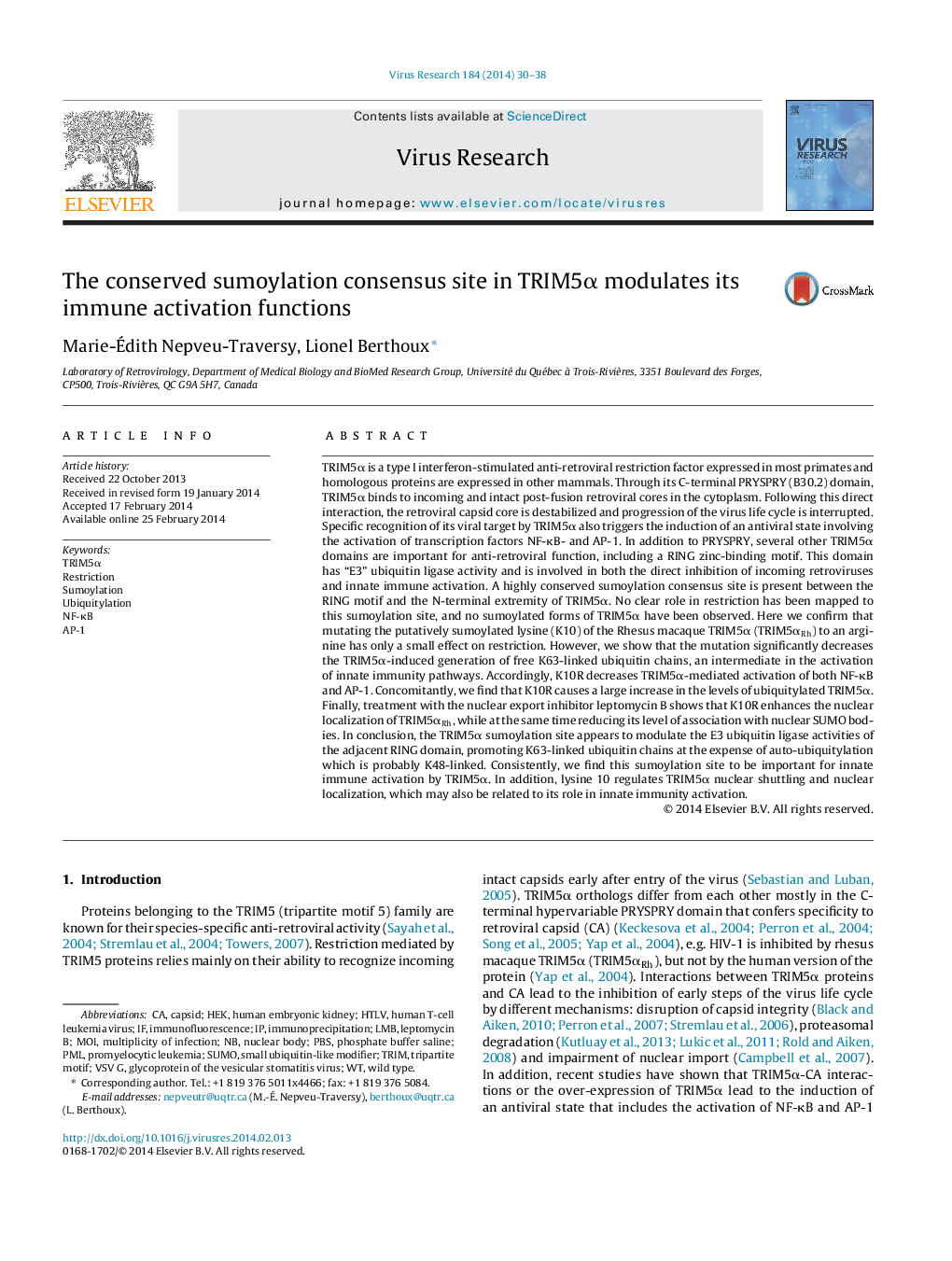| Article ID | Journal | Published Year | Pages | File Type |
|---|---|---|---|---|
| 6142399 | Virus Research | 2014 | 9 Pages |
Abstract
TRIM5α is a type I interferon-stimulated anti-retroviral restriction factor expressed in most primates and homologous proteins are expressed in other mammals. Through its C-terminal PRYSPRY (B30.2) domain, TRIM5α binds to incoming and intact post-fusion retroviral cores in the cytoplasm. Following this direct interaction, the retroviral capsid core is destabilized and progression of the virus life cycle is interrupted. Specific recognition of its viral target by TRIM5α also triggers the induction of an antiviral state involving the activation of transcription factors NF-κB- and AP-1. In addition to PRYSPRY, several other TRIM5α domains are important for anti-retroviral function, including a RING zinc-binding motif. This domain has “E3” ubiquitin ligase activity and is involved in both the direct inhibition of incoming retroviruses and innate immune activation. A highly conserved sumoylation consensus site is present between the RING motif and the N-terminal extremity of TRIM5α. No clear role in restriction has been mapped to this sumoylation site, and no sumoylated forms of TRIM5α have been observed. Here we confirm that mutating the putatively sumoylated lysine (K10) of the Rhesus macaque TRIM5α (TRIM5αRh) to an arginine has only a small effect on restriction. However, we show that the mutation significantly decreases the TRIM5α-induced generation of free K63-linked ubiquitin chains, an intermediate in the activation of innate immunity pathways. Accordingly, K10R decreases TRIM5α-mediated activation of both NF-κB and AP-1. Concomitantly, we find that K10R causes a large increase in the levels of ubiquitylated TRIM5α. Finally, treatment with the nuclear export inhibitor leptomycin B shows that K10R enhances the nuclear localization of TRIM5αRh, while at the same time reducing its level of association with nuclear SUMO bodies. In conclusion, the TRIM5α sumoylation site appears to modulate the E3 ubiquitin ligase activities of the adjacent RING domain, promoting K63-linked ubiquitin chains at the expense of auto-ubiquitylation which is probably K48-linked. Consistently, we find this sumoylation site to be important for innate immune activation by TRIM5α. In addition, lysine 10 regulates TRIM5α nuclear shuttling and nuclear localization, which may also be related to its role in innate immunity activation.
Keywords
PBSTRIM5αTRIMHTLVNF-κBAP-1PMLLMBSUMOylationHEKVSV GSUMOMOItripartite motifImmunofluorescenceNuclear bodyImmunoprecipitationphosphate buffer salinePromyelocytic leukemiaLeptomycin BRestrictionwild typeHuman T-cell leukemia virusUbiquitylationmultiplicity of infectionhuman embryonic kidneysmall ubiquitin-like modifierCapsid
Related Topics
Life Sciences
Immunology and Microbiology
Virology
Authors
Marie-Ãdith Nepveu-Traversy, Lionel Berthoux,
